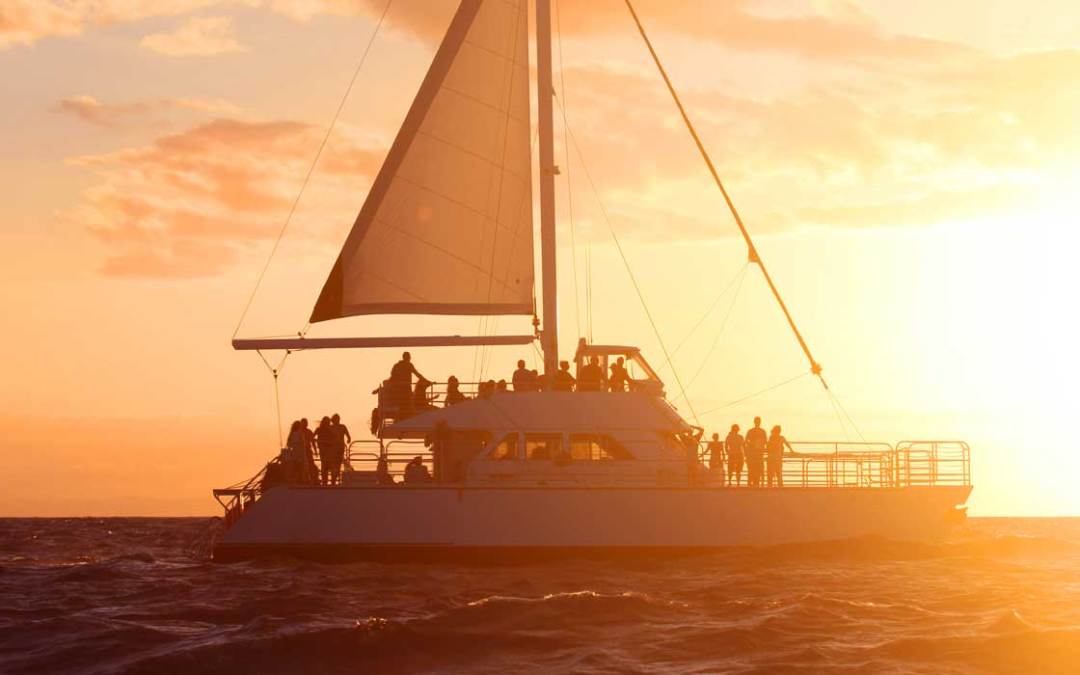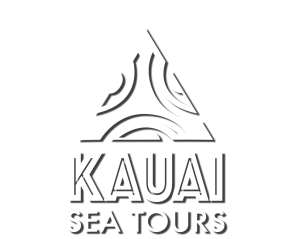Is A Catamaran Safer Than A Monohull?

At Kauai Sea Tours, all our whale watching and Na Pali Coast catamaran tours are navigated via catamaran. Some of our catamarans can even be over 50 feet long, such as the Lucky Lady, a 60-foot, two-deck luxury catamaran. Our luxurious catamarans are among the fastest on Kauai. The Imiloa Express has 1,000 horsepower and is over 40 feet long.
Catamarans are a piece of Hawaiian culture that’s full of tradition and history. Hundreds of years ago, native Hawaiians traveled around the Na Pali coast via catamarans. Riding a catamaran cruise is a great way to immerse yourself in a piece of native Hawaiian culture.
Our guests love riding our catamarans and we receive 5-star reviews daily. Additionally, our catamaran voyages have maintained a perfect safety record. Over the years, we have hosted over 1.2 million passengers and our catamarans have always safely returned to the harbor.
This is in part due to our incredible captains and crew members who have been with us for many years. But, it’s also because catamarans are a very safe vessel to travel around the island on. In fact, catamarans are often safer than monohull boats. This may make you wonder, what exactly is a catamaran? What is a monohull? Why is a catamaran safer than a monohull?
Keep reading below for the answers to all your questions!
What Is A Catamaran Boat?
Catamarans are large boats that have two hulls. The first catamarans to hit the waters were actually built by two logs bound together with a board on top of them that served as a deck. These boats were used for fishing and traveling around the islands by the ancient Polynesians.
Today, catamarans use far more innovative materials and technology though the same design principles apply. While the hulls may be made out of fiberglass, carbon fiber, or steel, catamarans have two hulls and a deck. However, many larger catamarans have a covered area for the captain and a cabin.
Additionally, catamarans have many different uses than fishing and traveling between islands. In the modern world, there are two main types of catamarans, including:
Sailing Catamarans
Sailing catamarans are used for day-sailing and can sometimes be rented out to the public because they’re very easy to learn how to navigate. Even if you’re not familiar with boating, small day-sailing catamarans have a very low learning curve.
There are also larger sailing catamarans. These larger sailing catamarans are often used for public cruises, charters, yacht parties, and even distance cruises. These sailing catamarans also often have a separate engine inside of each hull.
Power Catamarans
Power catamarans are often referred to as power cats, which is a pretty cool nickname. Power catamarans, like the larger sailing catamarans, usually have an engine in each hull. However, the engines inside of power cats are much larger than the sailing catamarans.
Some power cats are for fishing, while the larger power cats are used as ferries and charter boats.
What’s A Monohull Boat?
Monohulls only have one hull. The hull displaces the weight but can sometimes lean more from one side to the next at high speeds and around turns. The bottom of the hull may be flat, rounded, or very commonly, V-shaped.
Comparing Catamarans & Monohulls
Stability:
As we mentioned, catamarans feature two hulls. Even if the waters are rough, that wide base distributes the impact from waves. This allows catamarans to travel through the waters with safety and stability.
Since monohulls do not have two hulls that are widely spaced apart, they tend to be less stable.
Maneuverability:
Remember how we said that some shorter sailing catamarans are rented out for use by boaters with little to no experience? Oftentimes, catamarans are a safe option for rentals because they’re so easy to maneuver through the water. Their wide base and two hulls with motors in them often feel like driving a car. Driving a monohull boat isn’t always so easy to learn since it’s vastly different from driving an automobile.
Space:
Catamarans are very spacious vessels, more so than monohulls. A 50-foot monohull vessel may only have as much space as a 40-foot catamaran. Additionally, catamarans also include extensive deck and interior space, and may even feature several cabins with hull windows, special opening ports, and options for privacy in the cabins.
Size:
Catamarans are often huge vessels. Not only are catamarans often long, but their two hull design also means they are rather wide-set. This can make it difficult to find an area to dock your catamaran. Monohulls are often smaller.
Bad Weather:
Wind can make the waters extra rough for catamarans. Catamarans do not have an easy time pointing upward into the wind, which can make it difficult for catamarans to move swiftly through the water during windy conditions. Additionally, bad weather can also make the catamaran slam into the top of waves.
In bad weather, a monohull will often be able to point upward into the wind and break over waves.
Cannot Self-Right:
Once a catamaran has fully capsized, it’s practically impossible to set it right. However, catamarans rarely capsize unless there’s been a horrible accident. Monohulls can often be set right after capsizing, though may likely incur mechanical damage inside.
Are Catamarans or Monohulls Safer?
The answer to which type of watercraft is safer depends on the conditions. If you’re staying close to shore and out of bad weather, catamarans are far safer. If you’re in the middle of a windstorm, a monohull can be safer.
Explore Kauai Safely with Kauai Sea Tours
Kauai Sea Tours has been providing safe, fun experiences for families since 1986. As one of Kauai’s oldest and best-known boat tour operators, we have years of experience navigating the waters of Kauai and create a safe way for families to explore the beautiful island we call home. In addition to using one of the safest boats available, all our boats are maintained to meet strict United States Coast Guard requirements and our captains all maintain USCG licenses.
Explore the Na Pali Coast, go whale watching, try snorkeling on Kauai, or simply watch the sunset aboard our catamaran cruises.

